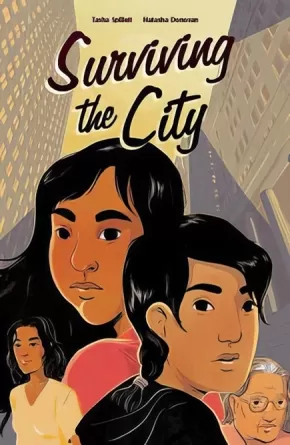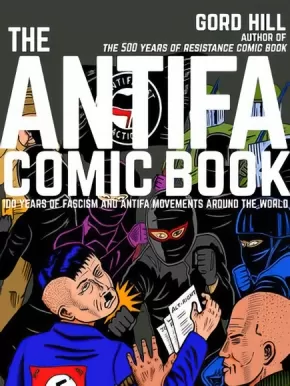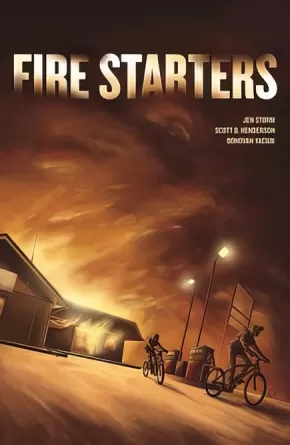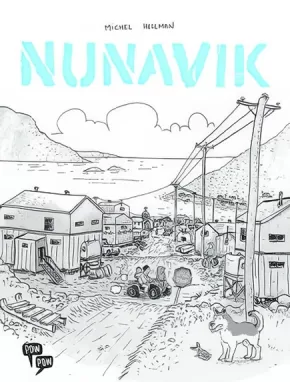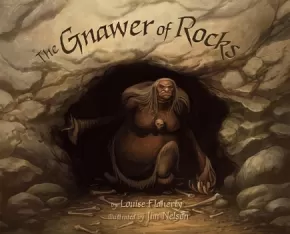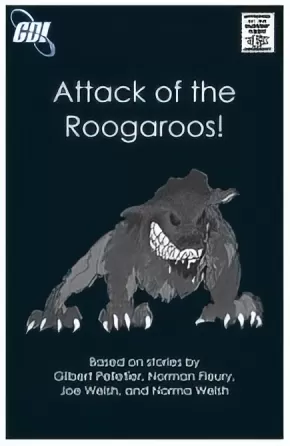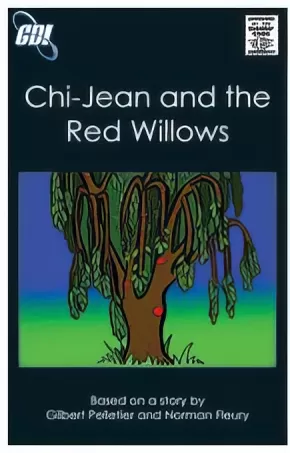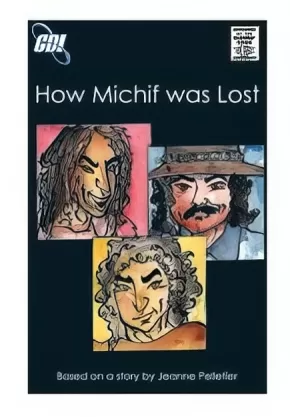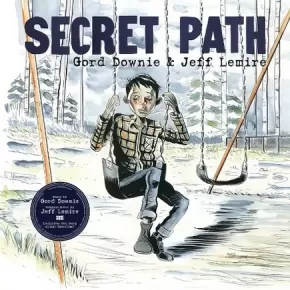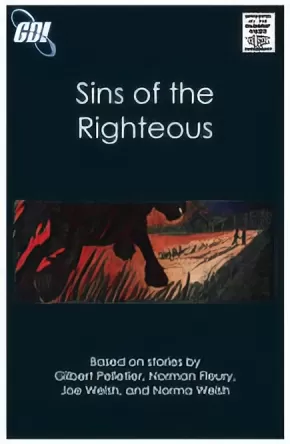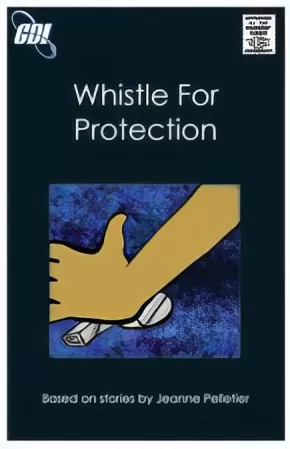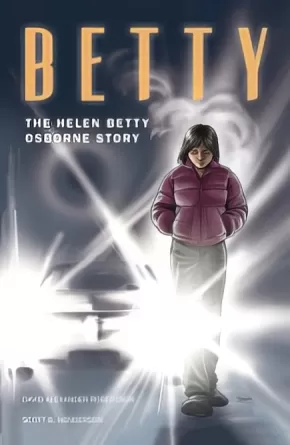
Graphic Novels
61
-
75
of
95 Results;
Sort By
Go To
of 7
Surviving the City Vol. 1
$21.95
Artists:
Format:
Paperback
Text Content Territories:
Indigenous Canadian; First Nations; Cree (Nehiyawak); Anishinaabeg;
ISBN / Barcode: 9781553797562
Synopsis:
Synopsis:
Tasha Spillett’s graphic novel debut, Surviving the City, is a story about womanhood, friendship, colonialism, and the anguish of a missing loved one.
Miikwan and Dez are best friends. Miikwan is Anishinaabe; Dez is Inninew. Together, the teens navigate the challenges of growing up in an urban landscape – they’re so close, they even completed their Berry Fast together. However, when Dez’s grandmother becomes too sick, Dez is told she can’t stay with her anymore. With the threat of a group home looming, Dez can’t bring herself to go home and disappears. Miikwan is devastated, and the wound of her missing mother resurfaces. Will Dez’s community find her before it’s too late? Will Miikwan be able to cope if they don’t?
Awards
- Winner of the 2019 Indigenous Voices Award for Works in an Alternative Format
- Co-winner of the Eileen McTavish Sykes Award for Best First Book by a Manitoba Author
- Winner of the Manuela Dias Design and Illustration Award, Graphic Novel category
Educator & Series Information
Recommended Grades: 7-12.
This graphic novel is part of the Surviving the City series, which is also part of the Debwe Series.
The Surviving the City series includes these titles:
- Surviving the City
- From the Roots Up
- We Are the Medicine
Recommended in the Canadian Indigenous Books for Schools 2019-2020 resource list for grades 10 to 12 for English Language Arts and Social Studies.
This book could be triggering for some readers as it contains mature content and focuses on issues such as Missing and Murdered Indigenous Women and Girls.
A Teacher Guide is available: Surviving the City Teacher Guide: Exploring Identity, Allyship, and Social Action for Meaningful Change in Grades 7-12
Additional Information
56 pages | 6.50" x 10.00"
The Antifa Comic Book: 100 Years of Fascism and Antifa Movements
$21.95
Format:
Paperback
ISBN / Barcode: 9781551527338
Synopsis:
Synopsis:
The shocking images of neo-Nazis marching in Charlottesville, Virginia, in the summer of 2017 linger, but so do those of the passionate anti-fascist protestors who risked their lives to do the right thing. In this stirring graphic non-fiction book by the author of The 500 Years of Resistance Comic Book, Gord Hill looks at the history of fascism over the last 100 years, and the concurrent antifa movements that have worked fastidiously to topple it.
Fascism is a relatively new political ideology, yet in its short history some of the greatest atrocities against humanity have been carried out in its name. Its poisonous roots have taken hold in every region of the world, from its beginnings in post-World War I Italy, through Nazi Germany, Franco's Spain, and the KKK in America. And today, emboldened by the American president, fascism is alive and well again. At the same time, antifa activists have proven, throughout history and again today, that the spirit of resistance is alive and well, and necessary.
In The Antifa Comic Book, Gord Hill documents these powerful moments of conflict and confrontation with a perceptive eye and a powerful sense of resolve.
Full-colour throughout. Includes a foreword by Mark Bray, author of Antifa: The Anti-Fascist Handbook.
Additional Information
112 pages | 8.00" x 10.00"
Fire Starters
$18.95
Artists:
Format:
Paperback
Text Content Territories:
Indigenous Canadian; First Nations;
ISBN / Barcode: 9781553796855
Synopsis:
Synopsis:
Looking for a little mischief after finding an old flare gun, Ron and Ben suddenly find themselves in trouble when the local gas bar on Agamiing Reserve goes up in flames, and they are wrongly accused of arson by the sheriff’s son. As the investigation goes forward, community attitudes are revealed, and the truth slowly comes to light.
Reviews
"Storm's story is a very thoughtful look at the two systems of justice. The Native boys in the White system, being interrogated is a stark contrast to what the White boy experiences in the Native system of justice. It points to the path Storm is looking for: how a community can heal, rather than how it could punish and inflict more harm on people... I recommend Jen Storm's Fire Starters. There's a lot to study, think about, and of course, talk about." -- Debbie Reese, American Indians in Children's Literature
"Fire Starters reminds readers of the many perspectives involved in reconciliation. The story moves beyond Ron and Ben’s experiences as aboriginal teens poorly treated by a white community to include the experiences of law enforcement officers, family members, and even the arsonists themselves. Complementing the fast-paced plot, Henderson’s artwork is drawn from a wide variety of perspectives, and Yaciuk’s moody colours suit the rising tension experienced by all characters. A cautionary tale about the consequences of prejudice and racism, Fire Starters is a valuable addition to conversations about the importance of reconciliation and the power of the truth." -- Roseanne Gauthier, National Reading Campaign
Educator & Series Information
Recommended Grades: 6-9
Fire Starters is one book in The Debwe Series. This series features exceptional Indigenous writing from across Canada.
Nunavik (7 in Stock)
$22.95
Format:
Paperback
Text Content Territories:
Indigenous Canadian; Inuit;
Grade Levels: 12; University/College;
ISBN / Barcode: 9782924049358
Synopsis:
Synopsis:
Author Michel Hellman meets with his editor Luc Bossé and casually promises to write a sequel to his best-selling book Mile End. But the Montréal neighborhood, with its trendy cafés and gluten-free bakeries, doesn't seem half as inspiring as it used to be. Part memoir and part documentary, Nunavik follows Hellman on a trek through Northern Quebec as he travels to Kuujjuaq, Puvirnituk, Kangiqsujuaq and Kangirsurk, meeting members of the First Nations, activists, hunters and drug dealers along the way. An honest and often funny account of this trip, Nunavik truly feels personal, with the author acknowledging (and challenging) his own prejudices. While the North has had a profound influence on our collective identity as Canadians, it remains an idea - myth rather than reality. Empirical rather than theoretical, Nunavik reflects on the way our relationship to the North has shaped our own cultural landscape.
Reviews
"An insightful, self-reflexive memoir of the author's journey to small Inuit communities in Nunavik, the northern part of the province of Quebec. Hellman shares his thoughts and perceptions of the North while never losing sight of his own racial privilege." - Jarrah, Goodreads.com
Educator Information
Graphic Novel | Non-Fiction
Additional Information
156 pages | 6.25" x 8.25" | Black and white images
The Gnawer of Rocks
$22.95
Artists:
Format:
Hardcover
Text Content Territories:
Indigenous Canadian; Inuit;
ISBN / Barcode: 9781772271652
Synopsis:
Synopsis:
While everyone is busy preparing for the coming winter, two girls wander away from their camp, following a path of strange, beautiful stones. Each stone is lovelier than the last, and the trail leads them farther and farther away from camp. But what starts out as a peaceful afternoon on the tundra quickly turns dangerous when the girls find themselves trapped in the cave of Mangittatuarjuk—the Gnawer of Rocks! Based on a traditional Inuit story, this graphic novel introduces readers to a dark and twisted creature that haunts the Arctic landscape and preys on unsuspecting children…
Educator Information
Recommended in the Canadian Indigenous Books for Schools 2019-2020 resource list as being useful for grades 6-9 in these subject areas: English Language Arts.
Gory details, often found in Inuit stories, may be disturbing for some readers.
Additional Information
56 pages | 10.25" x 8.25"
Will I See?
$19.95
Artists:
Format:
Paperback
Text Content Territories:
Indigenous Canadian;
ISBN / Barcode: 9781553796749
Synopsis:
Synopsis:
May, a young teenage girl, traverses the city streets, finding keepsakes in different places along her journey. When May and her kookum make these keepsakes into a necklace, it opens a world of danger and fantasy. While May fights against a terrible reality, she learns that there is strength in the spirit of those that have passed. But will that strength be able to save her? A story of tragedy and beauty, Will I See illuminates the issue of missing and murdered Indigenous women.
Additional Information
54 pages | 6.50" x 10.00"
Attack of the Roogaroos!
$5.00
Artists:
Format:
Paperback
Text Content Territories:
Indigenous Canadian; Métis;
ISBN / Barcode: 9781926795775
Synopsis:
Synopsis:
This is the fifth book in the Stories of Our People series.
Educator & Series Information
Stories of Our People/Lii zistwayr di la naasyoon di Michif Series is a departure from other books about Aboriginal or traditional stories. It includes five stories. As readers go through the series, they will notice that the narrative and artwork gets progressively darker. The series starts with trickster stories, then moves to a Whiitigo and Paakuk story, then jumps to a story about selling one’s soul and personal redemption, and finally to a Roogaroo story.
This project came to life from the stories of our Elders, and as such, original transcripts of the stories, prose renditions by Janice DePeel, and biographies of the storytellers and project team are available on the Virtual Museum of Métis History and Culture: www.metismuseum.ca/browse/index.php?id=13100
Based on stories by Norman Fleury, Gilbert Pelletier, Jeanne Pelletier, Joe Welsh, and Norma Welsh.
Stories of Our People/Lii zistwayr di la naasyoon di Michif Series:
Book 1: How Michif was Lost
Book 2: Chi-Jean and the Red Willows
Book 3: Whistle for Protection
Book 4: Sins of the Righteous
Book 5: Attack of the Roogaroos!
Chi-Jean and the Red Willows
$5.00
Artists:
Format:
Paperback
Text Content Territories:
Indigenous Canadian; Métis;
ISBN / Barcode: 9781926795744
Synopsis:
Synopsis:
This is the second book in the Stories of Our People series.
Educator & Series Information
Stories of Our People/Lii zistwayr di la naasyoon di Michif Series is a departure from other books about Aboriginal or traditional stories. It includes five stories. As readers go through the series, they will notice that the narrative and artwork gets progressively darker. The series starts with trickster stories, then moves to a Whiitigo and Paakuk story, then jumps to a story about selling one’s soul and personal redemption, and finally to a Roogaroo story.
This project came to life from the stories of our Elders, and as such, original transcripts of the stories, prose renditions by Janice DePeel, and biographies of the storytellers and project team are available on the Virtual Museum of Métis History and Culture: www.metismuseum.ca/browse/index.php?id=13100
Based on stories by Norman Fleury, Gilbert Pelletier, Jeanne Pelletier, Joe Welsh, and Norma Welsh.
Stories of Our People/Lii zistwayr di la naasyoon di Michif Series:
Book 1: How Michif was Lost
Book 2: Chi-Jean and the Red Willows
Book 3: Whistle for Protection
Book 4: Sins of the Righteous
Book 5: Attack of the Roogaroos!
How Michif was Lost
$5.00
Artists:
Format:
Paperback
Text Content Territories:
Indigenous Canadian; Métis;
ISBN / Barcode: 9781926795737
Synopsis:
Synopsis:
This is the first book in the Stories of Our People series.
Educator & Series Information
Stories of Our People/Lii zistwayr di la naasyoon di Michif Series is a departure from other books about Aboriginal or traditional stories. It includes five stories. As readers go through the series, they will notice that the narrative and artwork gets progressively darker. The series starts with trickster stories, then moves to a Whiitigo and Paakuk story, then jumps to a story about selling one’s soul and personal redemption, and finally to a Roogaroo story.
This project came to life from the stories of our Elders, and as such, original transcripts of the stories, prose renditions by Janice DePeel, and biographies of the storytellers and project team are available on the Virtual Museum of Métis History and Culture: www.metismuseum.ca/browse/index.php?id=13100
Based on stories by Norman Fleury, Gilbert Pelletier, Jeanne Pelletier, Joe Welsh, and Norma Welsh.
Stories of Our People/Lii zistwayr di la naasyoon di Michif Series:
Book 1: How Michif was Lost
Book 2: Chi-Jean and the Red Willows
Book 3: Whistle for Protection
Book 4: Sins of the Righteous
Book 5: Attack of the Roogaroos!
Secret Path
$26.99
Format:
Paperback
Text Content Territories:
Indigenous Canadian;
ISBN / Barcode: 9781501155949
Synopsis:
Synopsis:
Secret Path is a ten song album by Gord Downie with a graphic novel by illustrator Jeff Lemire that tells the story of Chanie “Charlie” Wenjack, a twelve-year-old boy who died in flight from the Cecilia Jeffrey Indian Residential School fifty years ago.
Chanie, misnamed Charlie by his teachers, was a young boy who died on October 22, 1966, walking the railroad tracks, trying to escape from the Cecilia Jeffrey Indian Residential School to return home. Chanie’s home was 400 miles away. He didn’t know that. He didn’t know where it was, nor how to find it, but, like so many kids—more than anyone will be able to imagine—he tried.
Chanie’s story is Canada’s story. We are not the country we thought we were. History will be re-written. We are all accountable. Secret Path acknowledges a dark part of Canada’s history—the long-suppressed mistreatment of Indigenous children and families by the residential school system—with the hope of starting our country on a road to reconciliation. Every year as we remember Chanie Wenjack, the hope for Secret Path is that it educates all Canadians young and old on this omitted part of our history, urging our entire nation to play an active role in the preservation of Indigenous lives and culture in Canada.
The next hundred years are going to be painful as we come to know Chanie Wenjack and thousands like him—as we find out about ourselves, about all of us—but only when we do can we truly call ourselves, “Canada.”
Proceeds from Secret Path will be donated to The Gord Downie Secret Path Fund for Truth and Reconciliation via The National Centre for Truth and Reconciliation (NCTR) at The University of Manitoba.
Educator Information
Recommended resource for English First Peoples grades 10-11 for units on Childhood through the Eyes of Indigenous Writers and First Steps - Exploring Residential School and Reconciliation through Children's Literature.
Note: This resource is not considered an authentic First Peoples resource.
Additional Information
96 pages | 12.00" x 12.00"
Sins of the Righteous
$5.00
Artists:
Format:
Paperback
Text Content Territories:
Indigenous Canadian; Métis;
ISBN / Barcode: 9781926795768
Synopsis:
Synopsis:
This is the fourth book in the Stories of Our People series.
Educator & Series Information
Stories of Our People/Lii zistwayr di la naasyoon di Michif Series is a departure from other books about Aboriginal or traditional stories. It includes five stories. As readers go through the series, they will notice that the narrative and artwork gets progressively darker. The series starts with trickster stories, then moves to a Whiitigo and Paakuk story, then jumps to a story about selling one’s soul and personal redemption, and finally to a Roogaroo story.
This project came to life from the stories of our Elders, and as such, original transcripts of the stories, prose renditions by Janice DePeel, and biographies of the storytellers and project team are available on the Virtual Museum of Métis History and Culture: www.metismuseum.ca/browse/index.php?id=13100
Based on stories by Norman Fleury, Gilbert Pelletier, Jeanne Pelletier, Joe Welsh, and Norma Welsh.
Stories of Our People/Lii zistwayr di la naasyoon di Michif Series:
Book 1: How Michif was Lost
Book 2: Chi-Jean and the Red Willows
Book 3: Whistle for Protection
Book 4: Sins of the Righteous
Book 5: Attack of the Roogaroos!
The Chief: Mistahimaskwa
$17.95
Artists:
Format:
Paperback
Text Content Territories:
Indigenous Canadian; First Nations; Cree (Nehiyawak);
ISBN / Barcode: 9781553796596
Synopsis:
Synopsis:
On her way to school one day, Sarah is relieved to find the book she’d dropped the day before – shortly after an encounter with a bear. But when she opens it, the story within, about the Cree chief Mistahimaskwa, comes alive. It takes Sarah back to the Saskatchewan Plains of 1832, where the young boy who would become the great chief first learns the ways of his people, to the final days of his life.
Educator & Series Information
The Chief is one book in the Tales From Big Spirit series. Tales from Big Spirit is a unique graphic novel series that delves into the stories of great Indigenous heroes from Canadian history—some already well known and others who deserve to be. Designed to correspond to grades 4–6 social studies curriculums across Canada, these full colour graphic novels could be used in literature circles, novel studies, and book clubs to facilitate discussion of social studies topics. These books will help students make historical connections while promoting important literacy skills.
Tales from the Big Spirit Series Teacher's Guide - Tales from the Big Spirit Series Teacher's Guide. The teacher's guide is designed to help classroom teacher's use the graphic novel series, Tales From Big Spirit, by David Alexander Robertson. The guide provides detailed lessons that meet a wide range of language arts and social studies goals, integrate Indigenous perspectives, and make curricular content more accessible to diverse learners.
The Chief is available in French: Le chef : Mistahimaskwa
Additional Information
30 pages | 6.50" x 10.00"
Whistle for Protection
$5.00
Artists:
Format:
Paperback
Text Content Territories:
Indigenous Canadian; Métis;
ISBN / Barcode: 9781926795751
Synopsis:
Synopsis:
This is the third book in the Stories of Our People series.
Educator & Series Information
Stories of Our People/Lii zistwayr di la naasyoon di Michif Series is a departure from other books about Aboriginal or traditional stories. It includes five stories. As readers go through the series, they will notice that the narrative and artwork gets progressively darker. The series starts with trickster stories, then moves to a Whiitigo and Paakuk story, then jumps to a story about selling one’s soul and personal redemption, and finally to a Roogaroo story.
This project came to life from the stories of our Elders, and as such, original transcripts of the stories, prose renditions by Janice DePeel, and biographies of the storytellers and project team are available on the Virtual Museum of Métis History and Culture: www.metismuseum.ca/browse/index.php?id=13100
Based on stories by Norman Fleury, Gilbert Pelletier, Jeanne Pelletier, Joe Welsh, and Norma Welsh.
Stories of Our People/Lii zistwayr di la naasyoon di Michif Series:
Book 1: How Michif was Lost
Book 2: Chi-Jean and the Red Willows
Book 3: Whistle for Protection
Book 4: Sins of the Righteous
Book 5: Attack of the Roogaroos!
Betty: The Helen Betty Osborne Story
$16.00
Artists:
Format:
Paperback
Text Content Territories:
Indigenous Canadian; First Nations; Cree (Nehiyawak);
ISBN / Barcode: 9781553795445
Synopsis:
Synopsis:
Helen Betty Osborne, known as Betty to her closest friends and family, dreamed of becoming a teacher. She left her home to attend residential school and high school in a small town in Manitoba. On November 13, 1971, Betty was abducted and brutally murdered by four young men. Initially met with silence and indifference, her tragic murder resonates loudly today. Betty represents one of almost 1,200 Indigenous women in Canada who have been murdered or gone missing.
This book is a true account. Content may be disturbing to some readers.
Educator Information
Recommended for ages 12 to 18.
Additional Information
30 pages | 6.50" x 10.00"
The Outside Circle: A Graphic Novel
$21.99
Artists:
Format:
Paperback
Text Content Territories:
Indigenous Canadian;
ISBN / Barcode: 9781770899377
Synopsis:
Synopsis:
In this important graphic novel, two Aboriginal brothers surrounded by poverty, drug abuse, and gang violence, try to overcome centuries of historic trauma in very different ways to bring about positive change in their lives.
Pete, a young Aboriginal man wrapped up in gang violence, lives with his younger brother, Joey, and his mother who is a heroin addict. One night, Pete and his mother’s boyfriend, Dennis, get into a big fight, which sends Dennis to the morgue and Pete to jail. Initially, Pete keeps up ties to his crew, until a jail brawl forces him to realize the negative influence he has become on Joey, which encourages him to begin a process of rehabilitation that includes traditional Aboriginal healing circles and ceremonies.
Powerful, courageous, and deeply moving, The Outside Circle is drawn from the author’s twenty years of work and research on healing and reconciliation of gang-affiliated or incarcerated Aboriginal men.
Educator Information
Recommended for ages 16 and up.
Curriculum Connections: Graphic Art, Indigenous Studies, Social Studies.
Additional Information
128 pages | 6.68" x 10.00"
Sort By
Go To
of 7

